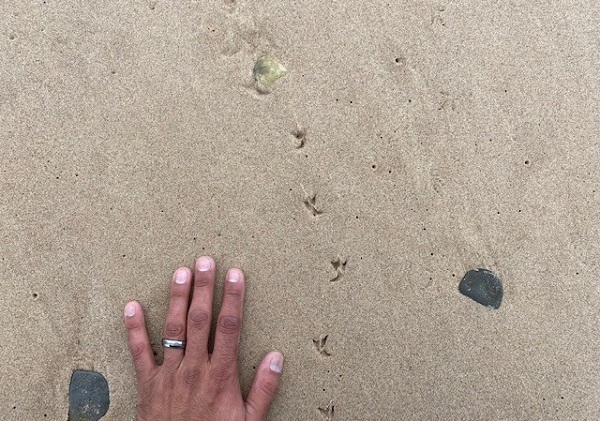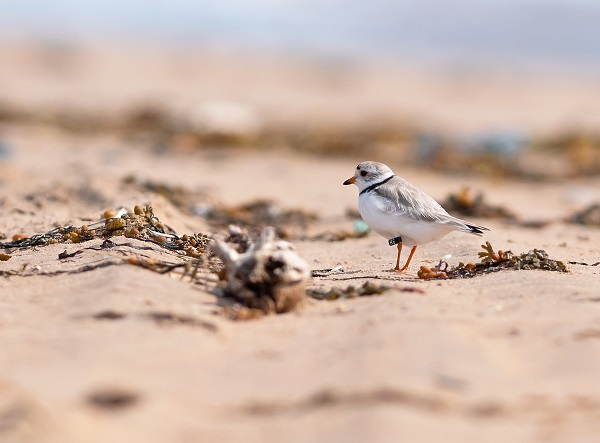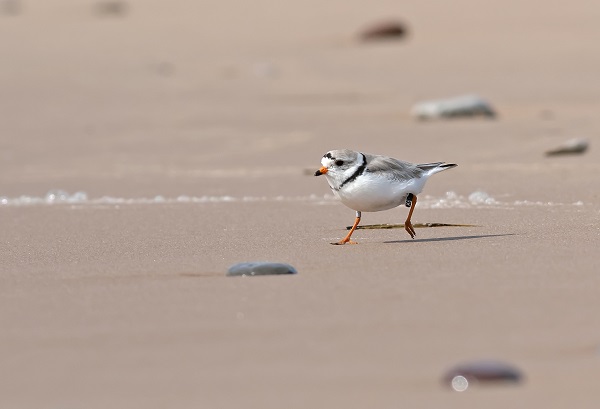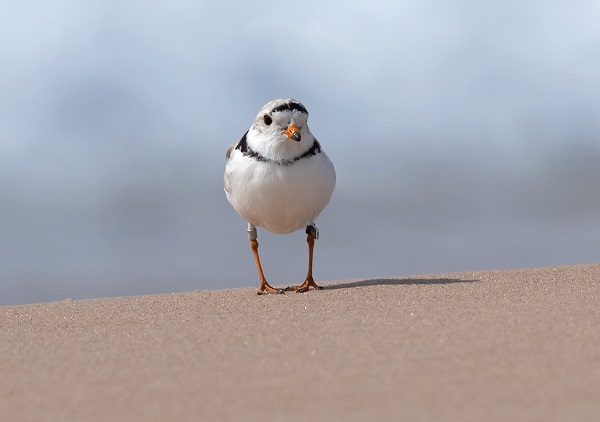In my blog featured in last month’s Quest Nature Tours newsletter, I asked you to venture an answer as to the identity of the creature that left these peculiar pigeon-toed tracks with cuneiform toe-marks in the sand in the photo below, taken in the Magdalen Islands.

And the answer is… (scroll down)
.
.
.
.
.
.
.
.
.
.
.
.
.
.
.
.
.
.
.
.
.
.
.
.
.
.
.

The Piping Plover! I was a bit surprised to see that these birds run with their feet pointing a bit inwards like this! I was able to confirm this as farther down the beach, we saw this bird dashing out onto the sand that had just been drenched by a wave in pursuit of prey buried shallowly in the sand.

I homed in on the tracks the bird left, and voilà! We got better looks of the bird later and I took the photo below showing that the bird rests with the feet pointing inwards, as well!

You may have noticed that this bird is wearing a little green flag (labelled K6) on it left leg. The Piping Plover is listed as Endangered in Canada and various individuals are being tracked by biologist to assist in monitoring their breeding success and survival. Piping Plovers rely on sand and pebble beaches along the saltwater shores of the East Coast and large inland water bodies including the Great Lakes and on the Prairies. Large-scale disturbance of these habitats renders them inhospitable to these birds. While they returned to breed in Ontario in 2007, the Magdalen Islands have all along been something of a stronghold for them owing to the abundance of isolated beaches and the protection of important stretches by conservation agencies.
To learn more about Piping Plovers on Ontario’s Great Lakes shore, you can view a talk that Andrea Gress of Birds Canada gave for the 2021 Huron Fringe Birding Festival this past June. It’s in our webinar library and you can view it here.
We have a chance to see Piping Plovers on our next Magdalen Islands tour in June 2022. Click here to learn more.


